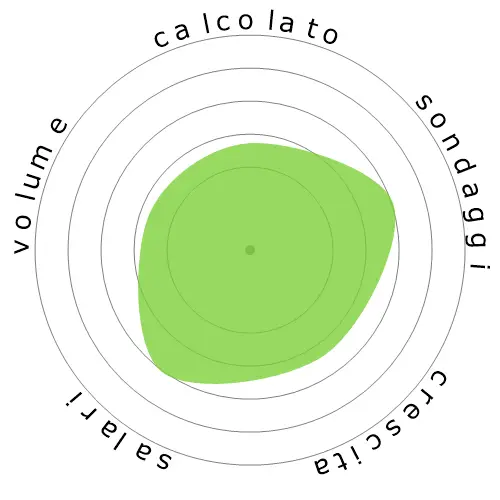Chimici




Le persone hanno anche visualizzato
Rischio di automazione calcolato
Rischio Moderato (41-60%): Le professioni con un rischio moderato di automazione coinvolgono solitamente compiti di routine, ma richiedono ancora un certo giudizio umano e interazione.
Ulteriori informazioni su cosa sia questo punteggio e su come viene calcolato sono disponibili qui.
Sondaggio degli utenti
I nostri visitatori hanno votato che c'è una bassa probabilità che questa professione sarà automatizzata. Questa valutazione è ulteriormente supportata dal livello di rischio di automazione calcolato, che stima una possibilità di automazione del 46%.
Cosa pensi sia il rischio dell'automazione?
Qual è la probabilità che Chimici venga sostituito da robot o intelligenza artificiale nei prossimi 20 anni?
Sentimento
Il seguente grafico è incluso ovunque ci sia una quantità sostanziale di voti per rendere i dati significativi. Queste rappresentazioni visive mostrano i risultati dei sondaggi degli utenti nel tempo, fornendo un'indicazione significativa delle tendenze di sentimento.
Sentimento nel tempo (annuale)
Crescita
Il numero di offerte di lavoro per 'Chemists' dovrebbe aumentare 7,6% entro il 2033
Occupazione totale e stime delle offerte di lavoro
Le previsioni aggiornate sono previste per 09-2025.
Salari
Nel 2023, il salario annuo mediano per 'Chemists' era di 84.680 $, o 40 $ all'ora.
'Chemists' hanno ricevuto un salario 76,2% superiore al salario mediano nazionale, che si attestava a 48.060 $
Salari nel tempo
Volume
A partire dal 2023 c'erano 83.530 persone impiegate come 'Chemists' negli Stati Uniti.
Questo rappresenta circa il 0,06% della forza lavoro impiegata in tutto il paese
In altre parole, circa 1 su 1 mille persone sono impiegate come 'Chemists'.
Descrizione del lavoro
Esegui analisi chimiche qualitative e quantitative o esperimenti nei laboratori per il controllo della qualità o del processo o per sviluppare nuovi prodotti o conoscenze.
SOC Code: 19-2031.00


Commenti
Leave a comment
There are autotitrators and autosamplers for many different equipment (Dissolution systems, HPLC, GC, UPLC, Mass spec and so on). These technologies have been around for decades yet analysts are still required to prepare samples, analyze them and then interpret and report data .
The two tenants which make a job susceptible to replacent by automation are Predictability and complexity. Some chemical analysis (more specifically wet chemistry, non-instrumental techniques) is more complex than what current automation systems can handle (i.e. chemical digestion of a sample, followed by extraction with a solvent, evaporation of the solvent) also sample quality is unpredictable (hence why QC labs exist, if every manufacturing method was flawless there would be no need for QC/QA).
Aspects of Inorganic Chemistry, Physical Organic Chemistry, and Polymers (as a part of Organic Chemistry) are very relevant to developing new materials with desirable properties. In fact, the Bureau of Labor Statistics (BLS) in the U.S.A. categorizes Chemists and Material Scientists as one and the same profile.
Job opportunities for Material Scientists do allow Chemists to be considered as Material Scientists when the Chemist has experience and multiple credits in Physical Chemistry, Polymers, and/or Inorganic Chemistry. Many Chemists follow this professional direction. In fact, some departments are even named 'Materials Chemistry'.
This fact indicates that one of these professions has an incorrect percentage representation on this website. Either Materials Science should have 51% (or a percentage much closer to Chemistry) on this website, or Chemistry should have 22% (similar to Materials Science). The large discrepancy simply reflects a mistaken view on the nature of their work.
Chemistry, by default, incorporates aspects of Physical Chemistry applicable to materials. It is suggested to reassess the activities of chemists to correct the percentage that has been flawed in a previous assessment.
Lascia un commento su questa professione